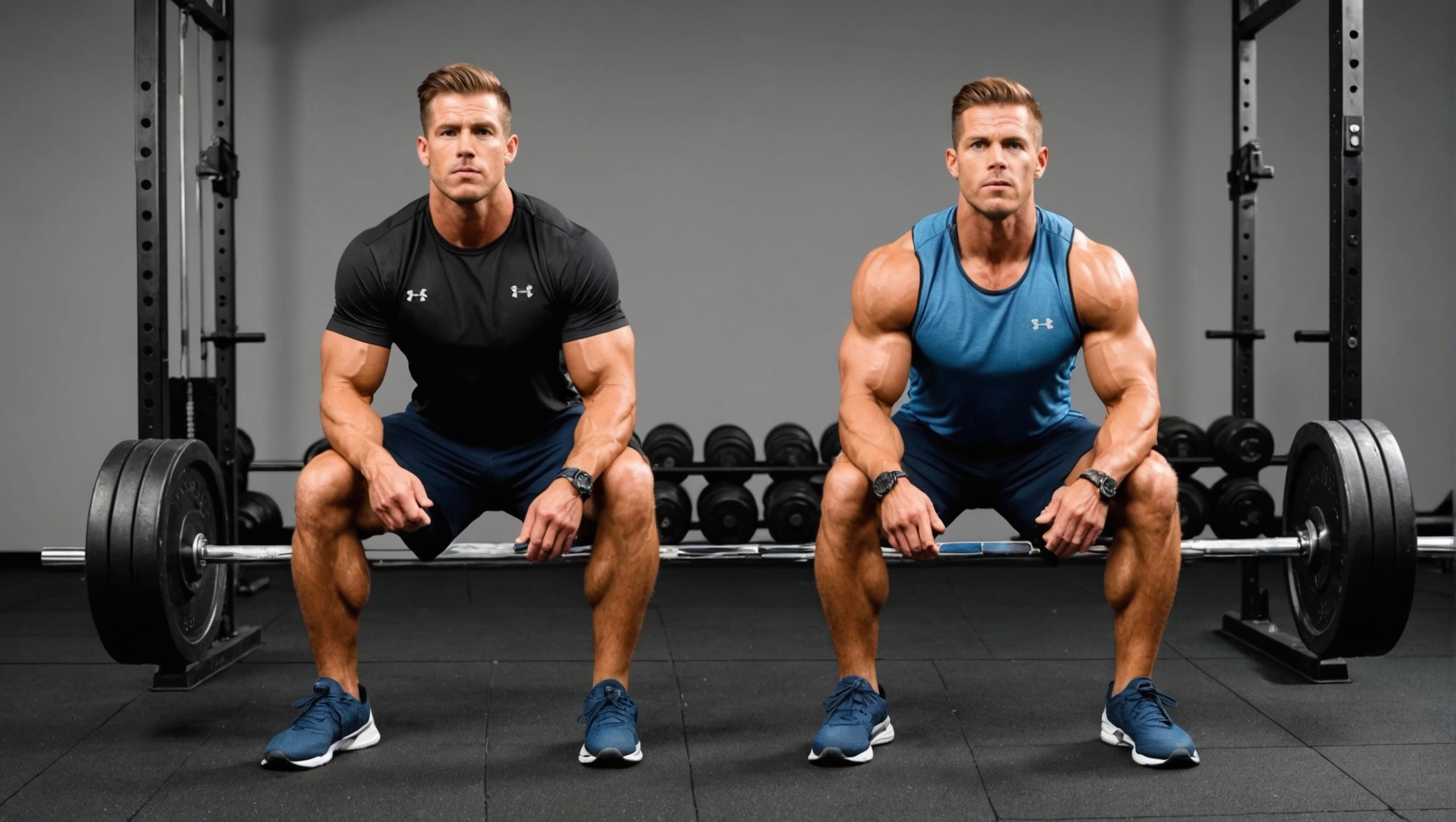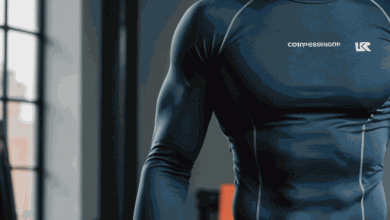Can You Wear a Weighted Vest All Day?

Weight vests have gained popularity as versatile fitness tools that can enhance strength, endurance, and even mental health. This article explores the practicality and benefits of wearing a weight vest all day, as well as the potential risks and considerations. Whether you’re a fitness enthusiast or someone curious about incorporating a weight vest into your daily routine, this guide provides valuable insights and practical tips.
Introduction
Weight vests are not just for athletes or military personnel; they are becoming increasingly popular among people of all fitness levels. These vests, designed to add extra weight to the body, can offer a range of health benefits when used correctly. However, understanding how to use them safely and effectively is crucial to maximizing their potential benefits.
This article will explore the reasons why someone might consider wearing a weight vest all day, the benefits and potential risks involved, and how to incorporate it into daily life. Whether you’re looking to boost your fitness routine or simply curious about the effects, this comprehensive guide will provide the information you need.
What is a Weight Vest?
A weight vest is a wearable garment designed to add resistance to physical activities. Typically, it is made from durable fabric with pockets that hold small weights. The vest can be adjusted to increase or decrease the amount of weight, allowing for customizable resistance levels.
The primary purpose of a weight vest is to add extra load to the body, which can help enhance strength, endurance, and cardiovascular health. By increasing the body’s weight, it forces the muscles to work harder, leading to improved physical performance over time.
Why Consider Wearing a Weight Vest All Day?
Wearing a weight vest all day can provide continuous resistance, leading to incremental improvements in strength and endurance. For individuals looking to enhance their physical fitness without dedicating extra time to exercise, a weight vest can be an effective tool.
Moreover, integrating a weight vest into daily activities can make everyday tasks more challenging, thereby increasing calorie expenditure and potentially aiding in weight loss. It also provides an opportunity to strengthen muscles and bones passively throughout the day.
Purpose of This Article
The purpose of this article is to provide an in-depth look at the benefits and considerations of wearing a weight vest all day. By understanding the mechanics and potential impacts, readers can make informed decisions about incorporating this fitness tool into their routines.
From understanding the construction of weight vests to exploring the physiological and psychological benefits, this guide will cover all aspects necessary for a comprehensive understanding of weight vests and their applications.
Understanding Weight Vests
What Are Weight Vests Made Of?
Weight vests are typically made from durable materials such as nylon or polyester to withstand the wear and tear of daily use. The pockets that hold the weights are usually reinforced to prevent tearing and ensure the weights remain secure during movement.
The weights themselves can vary, with some vests using metal plates, while others use sandbags or other dense materials. This versatility allows users to adjust the weight according to their fitness goals and comfort levels.
How Much Do They Typically Weigh?
The weight of a vest can vary significantly, typically ranging from as little as 5 pounds to over 50 pounds. The choice of weight should depend on the user’s fitness level, goals, and comfort. Beginners are advised to start with a lighter vest and gradually increase the weight as they build strength and endurance.
Using a weight vest that is too heavy can lead to strain and injury, so it’s crucial to choose a weight that allows for safe and effective use throughout the day.
How Do Weight Vests Work?
Weight vests work by adding extra resistance to the body, forcing muscles to exert more effort during physical activities. This increased demand on the muscles can lead to improvements in strength and endurance over time.
The added weight also increases the body’s energy expenditure, potentially aiding in weight loss efforts. As the body adapts to the additional load, users may notice improvements in overall fitness and physical performance.
Benefits of Wearing a Weight Vest
Does It Improve Cardiovascular Health?
Wearing a weight vest can enhance cardiovascular health by increasing the intensity of physical activities. The added weight forces the heart to work harder, which can improve cardiovascular endurance and efficiency over time.
Incorporating a weight vest into aerobic exercises such as walking or jogging can elevate the heart rate, providing a more intense workout and potentially leading to better cardiovascular health.
Can It Enhance Strength and Endurance?
A weight vest can significantly enhance strength and endurance by providing constant resistance to the muscles. This resistance challenges the muscles, promoting growth and increased endurance as the body adapts to the added load.
Regular use of a weight vest can lead to noticeable improvements in muscle strength and endurance, making it a valuable tool for those looking to enhance their physical fitness levels.
What Are the Mental Health Benefits?
Beyond physical benefits, wearing a weight vest can also contribute to mental well-being. The physical exertion required when wearing the vest can trigger the release of endorphins, leading to improved mood and reduced stress levels.
Additionally, the sense of accomplishment from overcoming the challenge of wearing a weight vest can boost self-confidence and motivation, further enhancing mental health.
Is Weight Loss a Potential Benefit?
One of the potential benefits of wearing a weight vest is weight loss. The additional weight increases the energy expenditure of daily activities, which can contribute to a calorie deficit and, ultimately, weight loss.
However, it’s important to combine the use of a weight vest with a healthy diet and regular exercise routine to achieve sustainable weight loss results.
Potential Risks and Considerations
Are There Any Health Risks Involved?
While weight vests can offer numerous benefits, there are also potential risks involved. Wearing a vest that is too heavy can lead to strain on the joints and muscles, increasing the risk of injury.
It’s important to start with a manageable weight and gradually increase it as your body adapts to the added resistance. Listening to your body and avoiding overexertion are key to minimizing the risk of injury.
Who Should Avoid Wearing a Weight Vest?
Individuals with certain health conditions, such as heart problems, joint issues, or back pain, should consult with a healthcare professional before using a weight vest. Pregnant women and those recovering from surgery should also avoid using a weight vest without medical clearance.
It’s essential to ensure that using a weight vest is safe for your individual health circumstances before incorporating it into your routine.
Practical Tips for Wearing a Weight Vest All Day
How Can You Minimize Discomfort?
To minimize discomfort when wearing a weight vest all day, ensure that the vest fits properly and is adjusted to distribute weight evenly. Wearing a moisture-wicking shirt underneath can help prevent chafing and improve comfort.
Taking regular breaks and adjusting the vest’s weight as needed can also help prevent discomfort and ensure a positive experience.
How to Choose the Right Weight Vest?
Choosing the right weight vest involves considering factors such as fit, weight capacity, and material. Look for a vest that offers adjustable weights and a secure, comfortable fit. Consider your fitness goals and select a vest that allows for incremental weight adjustments.
Reading reviews and trying on different models can help you find a vest that meets your needs and preferences.
What is the Proper Way to Wear One?
Properly wearing a weight vest involves ensuring a snug fit that allows for freedom of movement. The vest should be adjusted to evenly distribute weight across the shoulders and torso, avoiding strain on any one area.
It’s important to follow the manufacturer’s instructions for wearing and adjusting the vest to ensure safe and effective use.
How to Incorporate It Into Daily Activities?
Incorporating a weight vest into daily activities can be as simple as wearing it while walking, doing household chores, or even at work if your job involves physical movement. Start with lighter weights and gradually increase as your body adapts.
By integrating the vest into routine tasks, you can enhance your fitness without dedicating additional time to exercise.
What to Expect After a Week of Wearing a Weight Vest
Can You Feel Physical Improvements?
After a week of wearing a weight vest, you may begin to notice improvements in strength, endurance, and overall fitness. The added resistance can lead to increased muscle tone and cardiovascular benefits.
While significant changes may take longer to manifest, consistent use of a weight vest can contribute to gradual physical improvements.
What Changes Can Occur in Your Daily Routine?
Wearing a weight vest can make daily activities more challenging, leading to increased calorie burn and potentially greater energy levels. You may find that tasks such as walking, climbing stairs, or lifting objects become easier over time.
These changes can contribute to a more active lifestyle and improved physical health.
How Does It Affect Your Overall Well-being?
In addition to physical benefits, wearing a weight vest can have positive effects on overall well-being. The sense of accomplishment from overcoming the challenge of wearing the vest can boost confidence and motivation.
The physical activity involved can also lead to improved mood and reduced stress, contributing to enhanced mental health and overall well-being.
Conclusion
Is Wearing a Weight Vest All Day Right for You?
Deciding whether to wear a weight vest all day depends on your individual fitness goals, health status, and lifestyle. If used correctly, a weight vest can offer a range of benefits, including improved strength, endurance, and cardiovascular health.
However, it’s important to consider potential risks and ensure that using a weight vest is safe for your specific circumstances. Consulting with a healthcare professional can help determine if it’s a suitable option for you.
Final Thoughts and Recommendations
Wearing a weight vest can be an effective way to enhance your fitness routine and improve overall health. By starting with a manageable weight and gradually increasing resistance, you can safely enjoy the benefits of this versatile fitness tool.
Remember to listen to your body, prioritize comfort and safety, and consult with a healthcare professional if you have any concerns.
Frequently Asked Questions (FAQs)
How Long Should You Initially Wear a Weight Vest?
When starting with a weight vest, it’s advisable to wear it for short periods, such as 30 minutes to an hour, and gradually increase the duration as your body adapts. This approach helps prevent strain and allows you to adjust to the added weight safely.
Monitoring your body’s response and avoiding overexertion are key to a successful introduction to wearing a weight vest.
Can You Sleep with a Weight Vest On?
Sleeping with a weight vest is generally not recommended due to the potential for discomfort and strain on the body. The added weight can interfere with natural sleep positions and lead to muscle tension or injury.
For optimal safety and comfort, it’s best to remove the weight vest before sleeping and use it only during waking hours.
- Weight vests can enhance strength, endurance, and cardiovascular health.
- Start with a manageable weight and gradually increase resistance.
- Consult with a healthcare professional if you have health concerns.
- Ensure a proper fit to minimize discomfort and prevent injury.
- Integrate the vest into daily activities for continuous resistance.
“`


